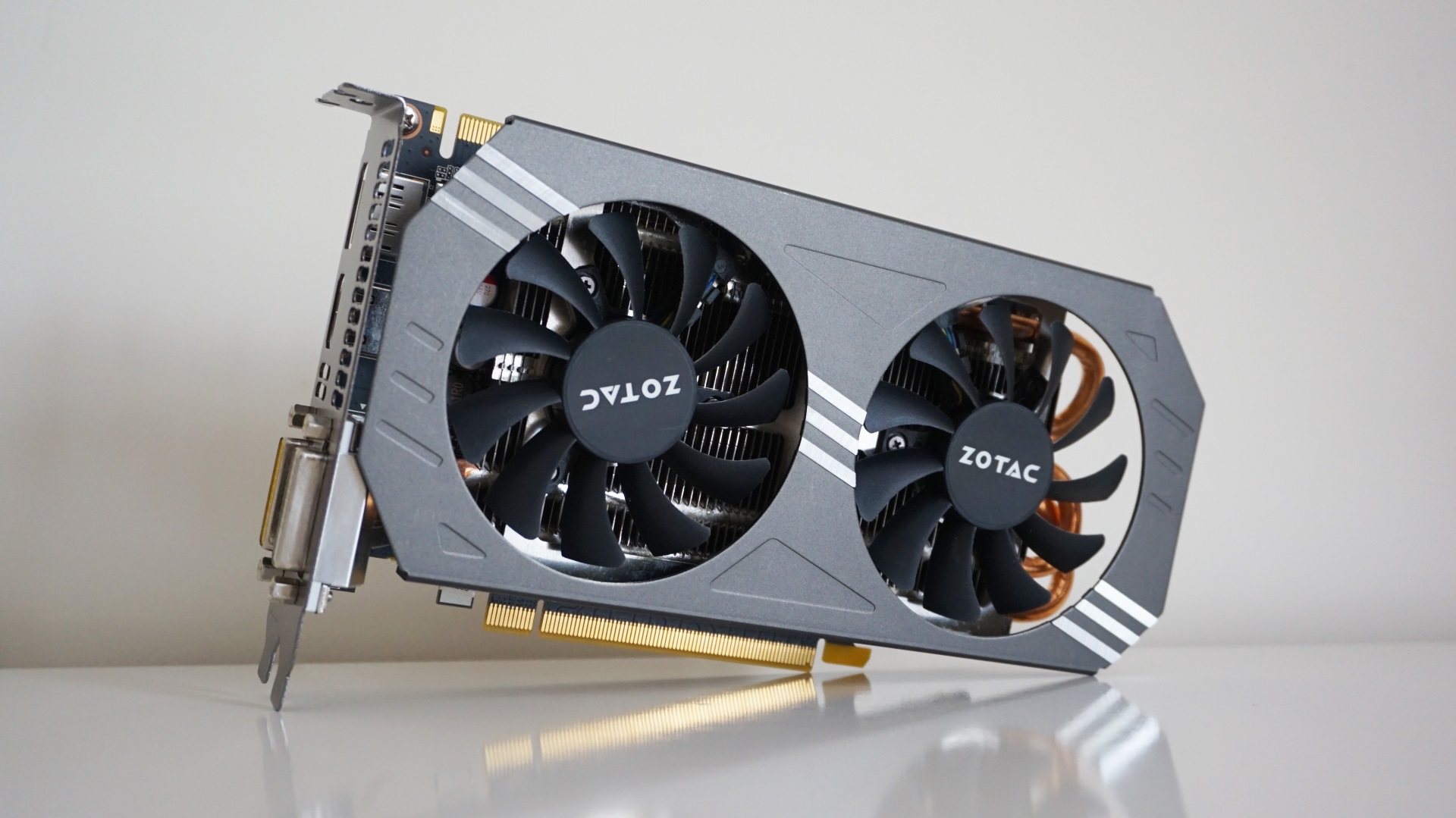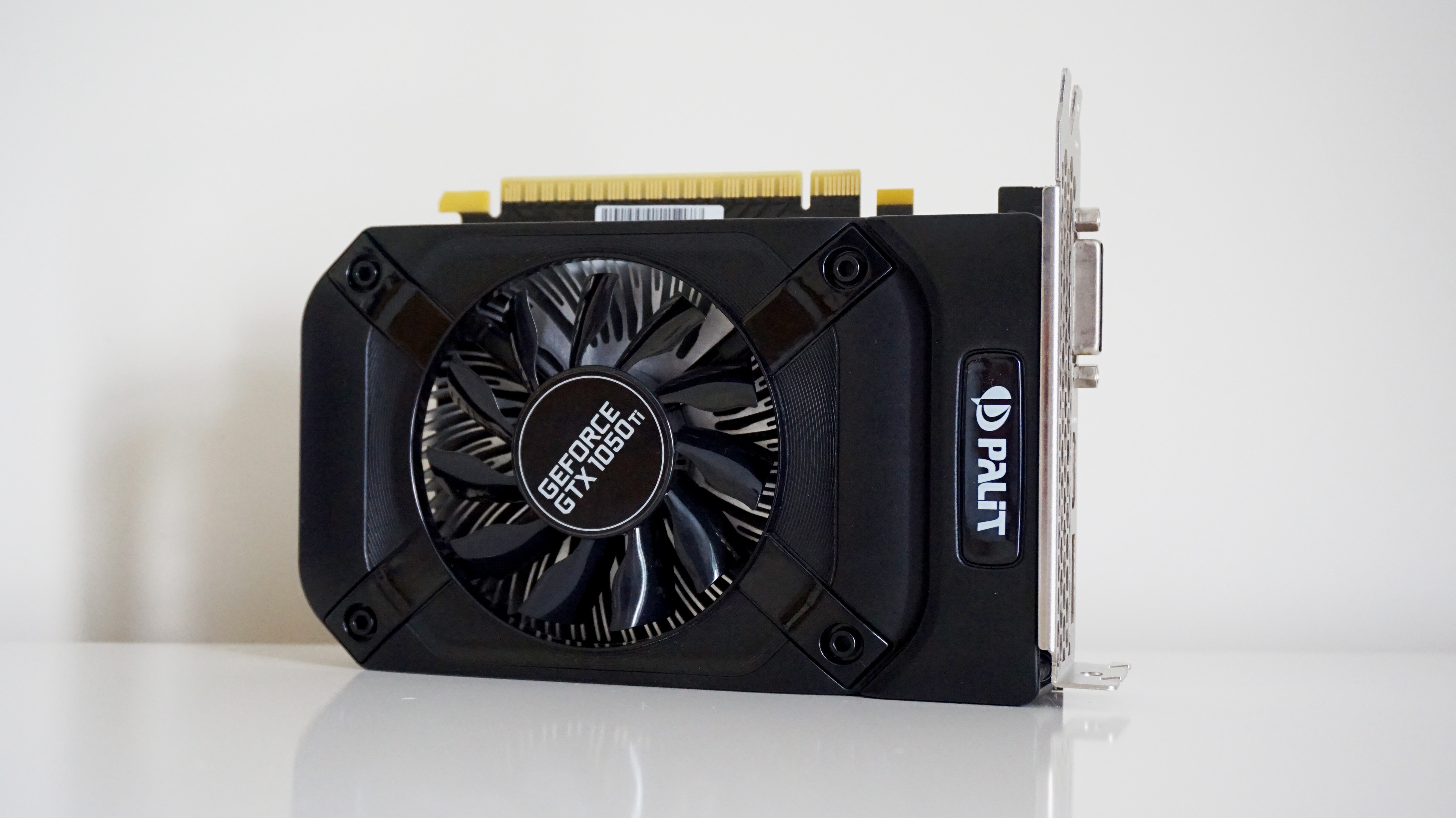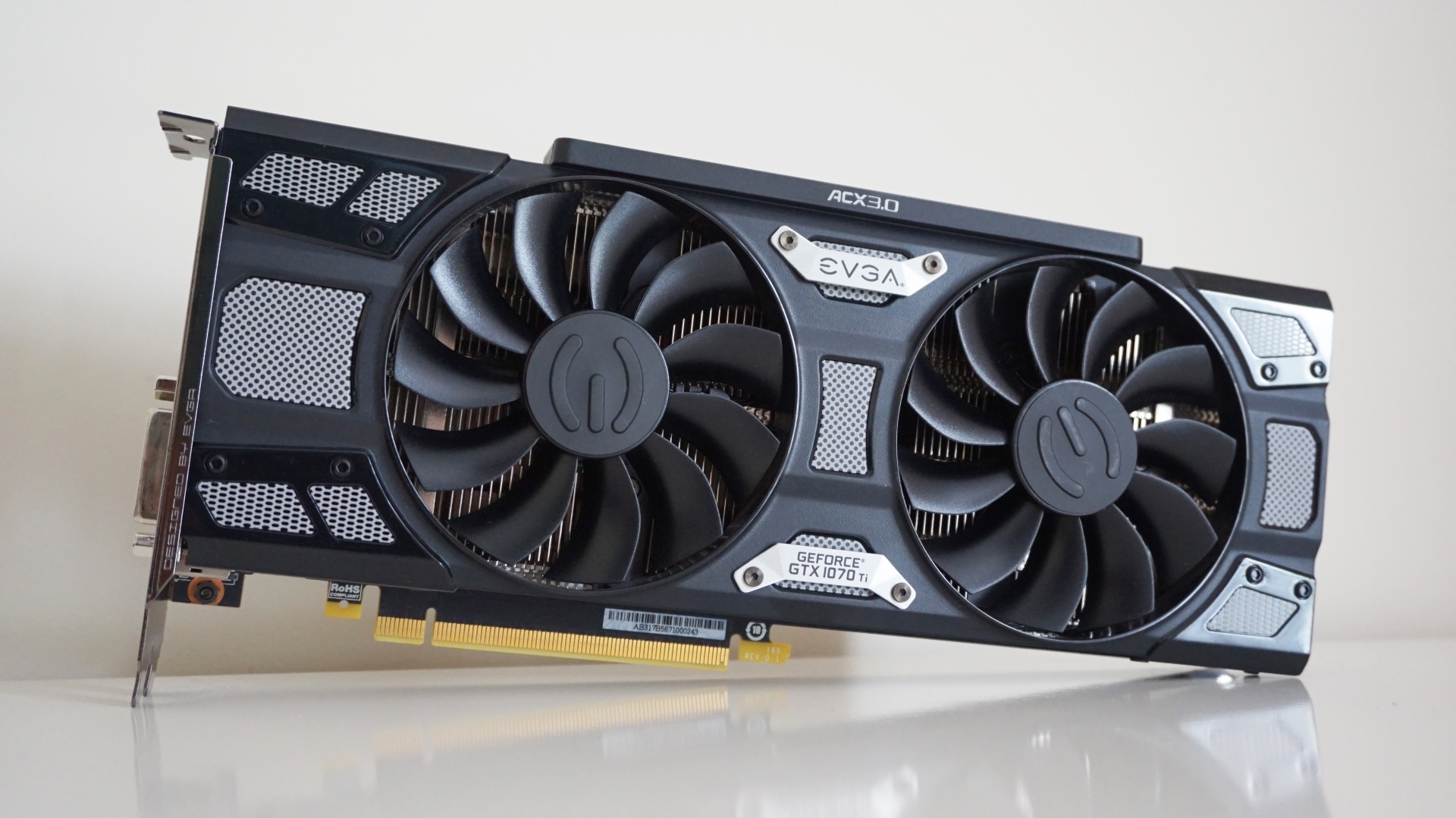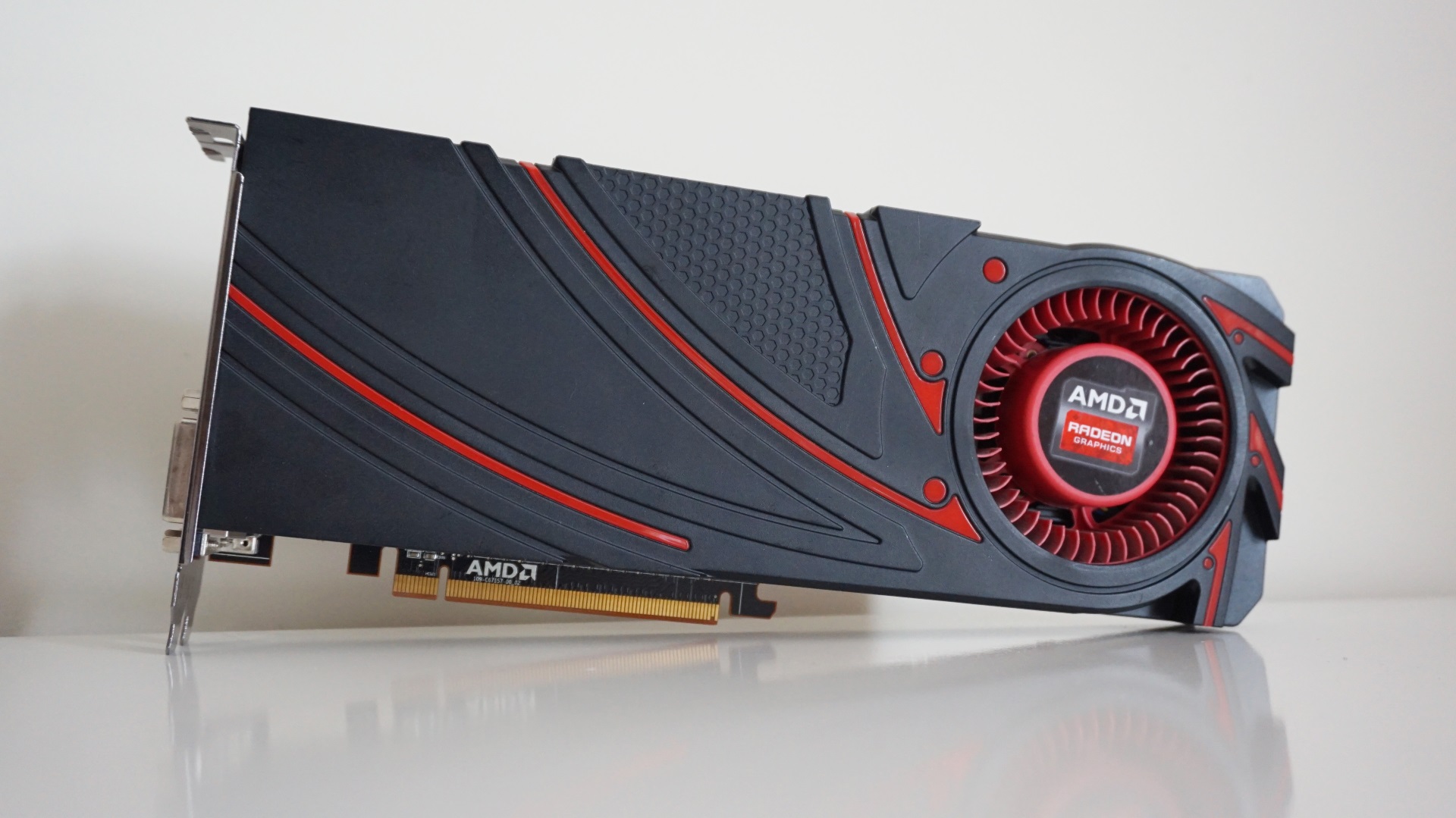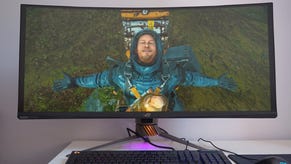Warframe: Fortuna graphics performance: How to get the best settings
Fortuna favours the bold
Warframe's new Fortuna expansion is finally here, providing the perfect excuse for players old and new to dust off their Tenno armour and head out into the never-before-seen frozen wastes of Venus' Orb Vallis region. It's the second open world map that's been added to the game since last year's Plains of Eidolon update, but given the number of performance issues people encountered the first time they ventured into out onto those titular plains, there's been much consternation over whether Fortuna will also be too much for some PCs to handle.
Fortunately (sorry), I'm here to help, as I've been chucking a bunch of today's best graphics cards at it, as well as a handful of older ones I've got knocking around, to see how it fares. Below, you'll find everything you need to know on how to get the best settings for Warframe's Fortuna update, as well as what you need to do in order to squeeze every last drop of performance out of your trusty graphics card.
Warframe graphics performance: The specs
For the most part, Warframe is an absolute doozy to get running on PC. Indeed, both graphics cards listed by Digital Extremes in their minimum spec requirements for the game (see below) are almost ten years old at time of writing, meaning even elderly PCs and laptops should be able to achieve a stable framerate without you having to spend lots of money on expensive new hardware.
Minimum specs:
OS: Windows XP
CPU: Intel Core 2 Duo e6400 / AMD Athlon x64 4000+
RAM: 2GB
Graphics: Nvidia GeForce 8600 GT / ATI Radeon HD 3600
DirectX: 9.0c
Now, I've only got a limited selection of 'mature' graphics cards at my disposal for this particular performance test - the oldest I have is just five years old as opposed to ten - so the advice you'll find here will naturally skew towards the more recent crop of cards you can buy right now.
However, while most of today's graphics cards can run Warframe just fine, there are still plenty of occasions when framerates can begin to tank - and that's in a PC with an Intel Core i5-8600K, 16GB of RAM and all the latest Windows 10 and DirectX updates installed, too. Case in point: the surface of Venus in Warframe's new Fortuna expansion. Here, framerates were practically cut in half compared to the speeds I was getting on regular missions, so hopefully there should still be plenty of useful info here regardless of how old your graphics card is.
With that in mind, here are all the graphics cards I've tested so far. Apologies in advance yet again for the lack of AMD cards in this list. I've been doing my best to get more of these in to balance out all the Nvidia ones, but man alive are they hard to come by these days. I've also decided not to include Nvidia's GeForce RTX 2080 or RTX 2080Ti cards in this particular test, because they're just too damn fast to even worry about. As always, I'll update this article with more graphics cards as and when I'm able to get them in, but for now, here's what we're dealing with:
- Nvidia GeForce GTX 970
- Nvidia GeForce GTX 1050Ti (4GB)
- Nvidia GeForce GTX 1060 (6GB)
- Nvidia GeForce GTX 1070
- Nvidia GeForce GTX 1070Ti
- AMD Radeon R9 270
- AMD Radeon R9 290
- AMD Radeon RX Vega 64
Warframe graphics performance: The goal
As always, the main aim of these graphics performance tests is to achieve a stable 60fps using the highest possible graphics settings, which in Warframe's case is its High preset. This time, however, I'm making the positively monstrous assumption that most of you probably aren't playing Warframe at 4K resolutions, so I've limited my tests to just 1920x1080 and 2560x1440 (if you would like 4K results, do say so in the comments and I'll add them in).
Since Warframe doesn't have the advantage of a built-in benchmarking tool, I tested each card by completing a standard mission, where I noted the minimum and maximum framerate I saw in each playthrough, running around Fortuna's hub world for a bit (also jotting down the minimum and maximum framerates on offer), and then playing through Fortuna's very first Vox Solaris mission out on the massive, open-world expanse of Vallis (or at least as far as I could get through it because I'm rubbish at Warframe, again recording those min and max frames). This should hopefully give you a fairly decent idea of what kind of average speed to expect in each of the game's three main play states, as well as how low any potential speed dips might go when things get a bit heated.
Warframe graphics performance: How to get the best settings
As mentioned above, most of the graphics cards on test here had absolutely no problem whatsoever running Warframe on its High graphics preset, regardless of whether I was playing at 1920x1080 or 2560x1440. However, there were still a couple of older cards that were clearly struggling to keep pace once I was out in the wilds of Vallis, so here are a couple of things to bear in mind if you find your performance is starting to lag.
One of the biggest things that can help improve performance in Warframe is to enable the game's Dynamic Resolution feature. This is disabled by default, but switching it on will automatically downscale the resolution on the fly to help maintain a steady framerate. It's a common feature employed by a lot of demanding games these days, and can be helpful when you hit a particularly rough patch but don't want to spend ages tinkering around with the settings manually - especially when Warframe doesn't actually pause the action when you open up the settings menu.
I'd opt for Auto if you want the least amount of fuss, but you can also set your own resolution scale by selecting the User option (although how much benefit you get with this over simply choosing a lower resolution is debatable). For reference, 100% is your monitor's native resolution (or whatever resolution you currently have selected in the main display settings), and the lowest User setting on offer, 50%, will be half of whatever that resolution that is.
I also found that switching off Ambient Occlusion, Trilinear Filtering and Runtime Tessellation also helped to stabilize performance in Warframe's regular missions, as these are some of the more GPU-heavy settings in the display options.
Over on the surface of Venus, however, just turning off these three wasn't quite enough to produce a noticeable improvement in the game's overall performance. Instead, I also had to turn off Local Reflections and Dynamic Lighting before I saw a decent jump in speed.
In most cases, though, I was able to get each graphics card running without much tinkering at all. To see how they all got on, just click the page numbers below or hop back up the page to the card of your choice. Also, if you're in need of proper, Fortuna gameplay assistance, be sure to check out Dave's extensive collection of Warframe guides, too.
Warframe graphics performance: Zotac GeForce GTX 970 Dual Fan
Despite its relative age, anyone still rocking Nvidia's GeForce GTX 970 card should have no trouble at all with Warframe's new Fortuna expansion, as I saw sky-high framerates across the board at both 1920x1080 and 2560x1440. It just goes to show what 4GB of video memory still gets you in this day and age, and I'm confident this Dual Fan model from Zotac should be pretty representative of what's possible with a GTX 970 regardless of which particular model you happen to own.
After all, its base and boost clock speeds of 1076MHz and 1216MHz are only a fraction higher than Nvidia's own reference specification for the GTX 970, so hopefully you'll be able to get just as good performance out of your own card as I have with mine.
Can I play this at 1920x1080?
Absolutely, and you can keep the graphics quality set to High regardless of whether you just fancy a quick mission or a proper foray out into Orb Vallis. In a regular mission, the GTX 970 managed a massive range of 175-230fps on High at this resolution, which averages out to just over 200fps - perfect if you've got a high refresh rate monitor.
Over in Fortuna, the frame rate dropped to 86-120fps, but I'd argue an average of 103fps is still more than enough for smooth play, even if that's roughly half of what you'd get on an ordinary mission.
The frame rate fell further still once I actually moved out onto Vallis proper, but even then you're only talking a rough low of around 95fps, with highs around 112fps. That's still an excellent range for high refresh rate monitor owners, and regular 60Hz monitor owners are still getting a flawless 60fps regardless of setting. Go and play to your heart's content.
Can I play this at 2560x1440?
Yes indeed. This tends to be the resolution where the GTX 970 comes unstuck in modern games, but not so in Warframe. Once again, I was able to maintain some very smooth framerates indeed using the High preset at this resolution, with regular missions reaching as high as 125-150fps.
Over on Fortuna, I saw my first low of 60fps with this particular card, but with highs of 80fps you shouldn't have any problems at all keeping a stable framerate. Vallis wasn't too choppy, either. While I did see the odd low of 55fps, more often than not it was hovering very comfortably around the 60fps mark, with highs of 65fps. If that simply won't do, then drop down to Medium and you'll be laughing.
Want to see what other graphics cards make of Warframe's Fortuna update? Here's a handy list of links:
- Nvidia GeForce GTX 1050Ti (4GB)
- Nvidia GeForce GTX 1060 (6GB)
- Nvidia GeForce GTX 1070
- Nvidia GeForce GTX 1070Ti
- AMD Radeon R9 270
- AMD Radeon R9 290
- AMD Radeon RX Vega 64
Warframe graphics performance: Palit GeForce GTX 1050Ti Storm X
Apart from my five-year-old AMD Radeon R9 270, Nvidia's GeForce GTX 1050Ti was definitely the card that struggled the most to keep its 60fps socks up when it came to venturing out into the wilds of Warframe's Orb Vallis landscape. Well, at least it did on High at 2560x1440(!). For the most part, you can expect practically flawless performance from the GTX 1050Ti at 1920x1080, but those after similar speeds at 1440p will likely need to make a couple of compromises.
Still, the GTX 1050Ti's 768 CUDA cores put in an admirable amount of work compared to the 1664 you'll find on the GTX 970, and the base and boost clock speeds of 1290MHz and 1392MHz on this Palit Storm X edition aren't even the best you'll find compared to other cards, either, so there's a high chance your particular GTX 1050Ti may perform much better than the speeds you'll find here.
Can I play this at 1920x1080?
Absolutely. In normal missions, you can expect to see anywhere between 80-120fps with the graphics preset on High, while Fortuna produced an equally slick range of 88-103fps. Much like the GTX 970, if you've got a high refresh rate monitor at your disposal, you'll almost certainly be able to make use of it here.
Vallis was the only place I saw the frame rate dip below 60fps, but when you're only talking a dip to 54fps, there's hardly much to complain about. Indeed, with its highest frame rate settling around 77fps, you should still be able to get nigh-on perfect 60fps+ gaming for the most part out on the Orb, even when all and sundry are bearing down on your in a massive firefight.
Can I play this at 2560x1440?
Yes, but those after the best speeds for Fortuna will likely need to make a couple of adjustments in the old graphics settings. On High, regular missions are no problem at all, with the framerate hitting an easy 63-80fps. Fortuna should be pretty safe on this setting as well, as here I saw lows of just 52fps and highs of 66fps. On balance, that means an average of 59fps.
Vallis, however, saw the framerate tank to as low as 37fps on High, and at best reached just 50fps, which may not be conducive to top Tenno action. As such, I'd recommend dropping it down to Medium when venturing out into Orb Vallis, as this produced a much smoother range of 46-60fps. That's still not perfect, of course, but it is playable.
Alternatively, if 60fps is of the utmost important to you and you don't want to settle for Low, I'd recommended sticking with Medium and turning off some of the graphics options I mentioned right at the start of this article. Otherwise, you may just be better off playing at 1920x1080 on High instead.
Want to see what other graphics cards make of Warframe's Fortuna update? Here's a handy list of links:
- Nvidia GeForce GTX 970
- Nvidia GeForce GTX 1060 (6GB)
- Nvidia GeForce GTX 1070
- Nvidia GeForce GTX 1070Ti
- AMD Radeon R9 270
- AMD Radeon R9 290
- AMD Radeon RX Vega 64
Warframe graphics performance: Asus GeForce GTX 1060 OC
If you're after a no-compromise Warframe: Fortuna experience at 1920x1080 and 2560x1440, Nvidia's GeForce GTX 1060 is the place to be. This particular version from Asus is the 6GB edition of the card, so results may vary if you've only got one of the lower-end 3GB models, but 6GB-ers shouldn't have any trouble at all getting Warframe to run nice and smoothly.
With base and boost clock speeds reaching 1594MHz and 1809MHz in its default gaming mode (and as high as 1632MHz and 1847MHz when you switch over to its special OC mode), it's worth noting that this particular Asus card is one of the faster GTX 1060s out there right now, so the results below may not be quite the same as other, slightly slower GTX 1060s available at the moment. Still, even as a best-case scenario for GTX 1060 owners, there's still plenty to like here regardless of what model you happen to own.
Can I play this at 1920x1080?
Yes indeedy. In regular missions you're looking at astronomical highs of between 230-330fps on High at this resolution, which is more than many high refresh rate monitors can actually handle. The frame rate tumbled much closer to home when rambling around Fortuna, but 112-156fps is still hardly something to sniff at.
Even out on the Vallis Orb, the frame rate rarely dipped below 112fps on High at this resolution, with highs of around 143fps. As such, high refresh rate monitor owners should still get a pretty fair deal here, but really, this card is much better suited to playing at 2560x1440.
Can I play this at 2560x1440?
As I've literally just mentioned, the GTX 1060 is ripe for play at 1440p. While you won't see quite the same dizzying frame rate heights as playing at 1080p, ordinary missions will still net you a sizable 150-200fps on High, while Fortuna tended to settle in the 95-120fps region.
Once again, the Vallis Orb proved to be the toughest test at this resolution, but even on High you're still only looking at a low of 60fps. The horror! Most of the time, you'll probably be in the region of 80fps, as the fastest speeds I saw just tipped over into triple figures. Not bad, eh?
Want to see what other graphics cards make of Warframe's Fortuna update? Here's a handy list of links:
- Nvidia GeForce GTX 970
- Nvidia GeForce GTX 1050Ti (4GB)
- Nvidia GeForce GTX 1070
- Nvidia GeForce GTX 1070Ti
- AMD Radeon R9 270
- AMD Radeon R9 290
- AMD Radeon RX Vega 64
Warframe graphics performance: Asus ROG Strix GeForce GTX 1070 Gaming
Even though Asus' ROG Strix Gaming edition of Nvidia's GeForce GTX 1070 is one of the beefier versions of this particular card out there at the moment, I'm 100% certain that any GTX 1070 will be able to play Warframe's Fortuna update without issue. That's because I never saw the frame rate go below 90fps at either 1920x1080 or 2560x1440. That's probably all you need to know about this card, but hey, have some numbers anyway. You deserve it.
Can I play this at 1920x1080?
Indubitably, and man alive this card is so dang fast that even the highest of high refresh rate monitors aren't able to display everything that's going on here. On High, regular missions soared right up to 400fps on occasion, with the absolute lowest settling around 320fps. That's proper bonkers.
Bizarrely, it was Fortuna, not the Orb Vallis hat produced the slowest speeds on this particular card, but I don't think anyone's really going to complain about frame rates between 91-113fps. Orb Vallis, meanwhile, was frequently up in the 190fps region, with lows of 124fps. No worries at all.
Can I play this at 2560x1440?
Do you breathe air? Of course you can, and you can do it all on High, too. Even at this resolution you won't find a monitor that can make full use of all the frame being pumped out by this monstrous machine, as for regular Warframe missions you're looking at anywhere between 190fps and a whopping 290fps.
Fortuna brings things back down to Earth slightly, settling around a mere 89-121fps most of the time, and I saw pretty much exactly the same kind of speed out on the Orb Vallis as well, with the frame rate veering between 90fps and 125fps. Job done.
Want to see what other graphics cards make of Warframe's Fortuna update? Here's a handy list of links:
- Nvidia GeForce GTX 970
- Nvidia GeForce GTX 1050Ti (4GB)
- Nvidia GeForce GTX 1060 (6GB)
- Nvidia GeForce GTX 1070Ti
- AMD Radeon R9 270
- AMD Radeon R9 290
- AMD Radeon RX Vega 64
Warframe graphics performance: EVGA GeForce GTX 1070Ti SC Gaming
Right, we're getting into silly territory here, but since you're here already, here's a teensy bit about why Nvidia's GeForce GTX 1070Ti is also a perfectly capable card for playing Warframe's new Fortuna expansion. Here's what I want you to do. Go back to the previous page, read the results for the regular GTX 1070 and imagine even faster speeds than that. Go on. Off you pop.
Can I play this at 1920x1080?
I'm not sure why you're even still reading at this point.
Can I play this at 2560x1440?
Didn't you hear what I just said? Stop reading and go and enjoy Warframe, you silly!
Want to see what other graphics cards make of Warframe's Fortuna update? Here's a handy list of links:
- Nvidia GeForce GTX 970
- Nvidia GeForce GTX 1050Ti (4GB)
- Nvidia GeForce GTX 1060 (6GB)
- Nvidia GeForce GTX 1070
- AMD Radeon R9 270
- AMD Radeon R9 290
- AMD Radeon RX Vega 64
Warframe graphics performance: Sapphire Radone R9 270 Dual-X
Ah, my faithful R9 270. Whereas other graphics performance tests have beaten you into the ground and eaten your framerates for breakfast, Warframe lifts you up and serves a delicious, never-ending feast o' frames - well, at least it does at 1920x1080, but that's still a heck of a lot better than its performance in Shadow of the Tomb Raider, Monster Hunter: World and Assassin's Creed Odyssey.
Despite having just 2GB of memory to its name and a piddly clock speed of just 920MHz, the R9 270 proved an admirable partner for Warframe's Fortuna expansion at 1080p, showing this card isn't quite ready for the bin just yet. I'm also pleased to say you can manage a bit of 2560x1440 on this card as well, producing probably the best results I've ever seen in all my years of ownership. Here's how it got on.
Can I play this at 1920x1080?
You can indeed. Regular missions proved no trouble at all for the R9 270 on High at this resolution, and those with high refresh rate monitors are in for a treat indeed, as I regularly saw framerates in the 95-135fps region. Fortuna was also lovely and smooth on this preset, and you'll be able to explore this hub world at a silky 62-78fps.
The Orb Vallis, however, proved too much for the R9 270 on High, with the frame rate regularly plummeting all the way down to 27fps during particularly heavy gun fights. There were highs of 42fps, but it still wasn't particularly smooth. Things improved slightly when I turned off the Trilinear Filtering, Runtime Tessellation and Ambient Occlusion features in the display settings menu, but even then you're really only looking at around 37-48fps.
Instead, I'd recommend swapping down to Medium for Vallis venturing, as here I saw a much steadier 48-58fps, which I was able to nudge even further up by disabling the same features mentioned above.
Can I play this at 2560x1440?
Do my eyes deceive me? An R9 270 capable of smooth 1440p play? Well, I never. Admittedly, your best bet for 60fps+ is settling for Low here, but you can still manage decent speeds on regular missions at Medium or High.
Really, though, Fortuna hunters are better off on Low at this resolution, as Medium only saw a framerate range of 37-52fps in the hub area, while the Orb Vallis came in even lower at just 30-40fps. I managed to get the former up to 51-66fps by switching off Trilinear Filtering, Runtime Tessellation and Ambient Occlusion again, but this wasn't enough to really make much of a difference out on Vallis. As a result, I'd recommend opting for Low here, which should get you lovely smooth framerates up in the 92-109fps region in Fortuna and 78-104fps on the Orb Vallis.
Want to see what other graphics cards make of Warframe's Fortuna update? Here's a handy list of links:
- Nvidia GeForce GTX 970
- Nvidia GeForce GTX 1050Ti (4GB)
- Nvidia GeForce GTX 1060 (6GB)
- Nvidia GeForce GTX 1070
- Nvidia GeForce GTX 1070Ti
- AMD Radeon R9 290
- AMD Radeon RX Vega 64
Warframe graphics performance: AMD Radeon R9 290
AMD's Radeon R9 290 has proven itself to be a surprisingly capable card over the various graphics performance tests I've done this year, showing that, in most cases, it's still got just as much life left in it as Nvidia's GTX 970. After all, it's got the same 4GB of video memory to do most of the heavy-lifting in Warframe's new Fortuna expansion, and the fact its base clock speed only reaches a mere 947MHz doesn't seem to hinder it in the slightest.
Indeed, despite having slower innards than the GTX 970, the R9 290 produced a very pleasing set of framerates at 1920x1080 and 2560x1440 alike. Here's what to expect:
Can I play this at 1920x1080?
Absolutely. Regular missions are no problem at all for the R9 290 on High, with framerates reaching up into the heavens of 185-235fps in most cases, while the hub world of Fortuna came in at a very respectable 89-115fps. Like many other graphics cards I've talked about here, those with high refresh rate monitors have lots to gain here.
Indeed, even out on the Orb Vallis only saw the framerate go as low as 55fps on the odd occasion, so you should be able to get a flawless 60fps or above for the majority of your plat time. If you've got a high refresh rate monitor, you can also enjoy highs of up 90fps out here.
Can I play this at 2560x1440?
Yes, but you'll probably have to knock the graphics settings down a peg when you get to Vallis. On High, regular missions are a complete walk in the park at 100-130fps, and even Fortuna saw perfectly smooth speeds between 62-84fps.
Vallis, however, got rather choppy on this preset at 1440p, with the framerate veering between 35fps and 60fps. It was playable for the most part, but you'll probably feel much happier switching down to Medium. Here, the framerate soared back up to a much more comfortable 50-70fps, and spent most of its time hovering around the 60fps mark.
Want to see what other graphics cards make of Warframe's Fortuna update? Here's a handy list of links:
- Nvidia GeForce GTX 970
- Nvidia GeForce GTX 1050Ti (4GB)
- Nvidia GeForce GTX 1060 (6GB)
- Nvidia GeForce GTX 1070
- Nvidia GeForce GTX 1070Ti
- AMD Radeon R9 270
- AMD Radeon RX Vega 64
Warframe graphics performance: Sapphire Radeon RX Vega 64 Nitro+
Finally, I've managed to get one of AMD's Radeon RX Vega 64 cards back in for testing, this time in the form of Sapphire's Nitro+ edition. It's a bit of a mammoth card, both in terms of its overall size and base and boost clock speed (which sit at 1423MHz and 1611MHz respectively), so the results below are best viewed as a best case scenario for Vega 64 owners as opposed to anything else.
Still, much like we saw with Nvidia's GTX 1070, there's really nothing to worry about on this front, as the Vega 64 proved itsef more than capable of playing Warframe's Fortuna update at both 1920x1080 and 2560x1440 on maximum settings. So I'm going to stop typing now and throw some numbers at you. Get ready.
Can I play this at 1920x1080?
You betcha. With regular missions hitting ridiculous highs of 290-375fps on High, the Vega 64 has more than enough firepower in its tank for even the choppiest of frozen Fortuna waters. In the hub world, for example, you're looking at framerates between 100-125fps, while the wilds of Orb Vallis produced an even smoother range of 150-200fps. High refresh rate monitor owners, your time has come.
Can I play this at 2560x1440?
Of course you can. Once again, the Vega 64 is more capable of maxing out even the highest of high refresh rate monitors at this resolution on High during your standard mission segments, as I regularly saw framerates hit between 250fps and a mad 290fps.
Even Fortuna and Orb Vallis will give most high refresh rate monitors a run for their money at this resolution, especially if you've got one that goes up to 120Hz. During your preparations to go out on the Vallis wilds, for instance, you're looking at an identical range of 100-125fps jumping around the hub of Fortuna at 1440p, while the Orb Vallis proper broadens it slightly further to 90-125fps. I told you there was nothing to worry about, didn't I?
Want to see what other graphics cards make of Warframe's Fortuna update? Here's a handy list of links:




